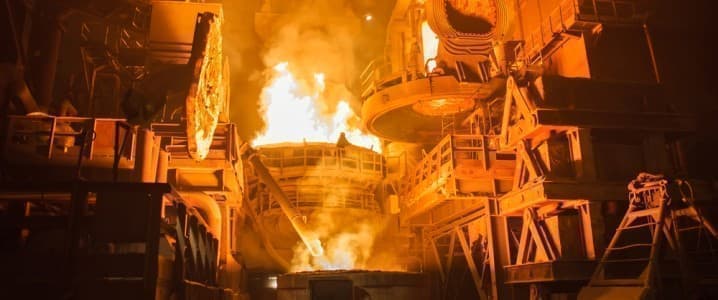Is China Losing Its Dominant Position in the Global Steel Market?
- China's government has suspended approvals for new steel plants due to overproduction and weak demand.
- The Chinese steel industry, despite being the world's largest, is facing significant challenges, including a struggling property sector and increased international pressure due to rising exports.
- Iron ore prices have plummeted as a result of decreased demand from Chinese steel mills.
Via Metal Miner
Amidst continuing reports of an economic downturn with little or no sign of improvement now comes a report that the Chinese Government has suspended the system allowing approval of new steel plants. It is a move that could have significant implications for the Chinese steel industry and global steel manufacturing as a whole.
According to Bloomberg, China’s Ministry of Industry and Information Technology recently stated that it had decided to pause the current mechanism wherein new steel plant construction was allowed as long as steelmakers first shut down some of their existing facilities. The ministry also mentioned plans to create a new approval process, but provided no timeline. For years, the Chinese Government has insisted on eliminating existing capacity as a pre-condition before allotting permission to construct a new plant.
Seems like those rules are history, for now.
The move surprised almost everyone in the steel sector, but resulted in mostly muted reactions. As frequently reported by MetalMiner in the past, steel exports from China have shot up in the last couple of years and currently stand at their highest rate since 2016.
China Relies on Exports to Buoy Steel Manufacturing
China is the world’s largest steel producer, accounting for over 50% of the global output, or roughly a billion tons a year. But post-COVID, Chinese steel mills struggled to find domestic customers and are now resorting to dumping cheap steel products into as many markets as possible. In response, many of those countries’ steel industry leaders continue to protest.
According to one estimate by the Bank of America, five Southeast Asian countries, including Vietnam, Thailand, and Malaysia, absorbed 26% of China’s steel exports in 2023 alone. Steel manufacturing titans like ArcelorMittal SA, too, have complained about these exports. Furthermore, the lack of concrete measures announced at China’s high-profile Third Plenum dimmed hopes that the country’s struggling property sector would recover from its downturn.
In fact, just a few days ago, Hu Wangming, head of China Baowu Steel Group Corp., told employees at the company’s biannual meeting that conditions in the country were like a “harsh winter” that could become longer and colder and even more difficult. He also warned that China’s steel industry faced a situation worse than the crises it endured in 2008 and 2015.
Iron Ore Prices Plunge Amid Falling Demand
The aforementioned Bloomberg report also covered the Chinese Ministry warning that the steel industry was staring at challenging times, particularly in terms of the supply and demand relationship. It stated that numerous problems still remain, such as inadequate policy implementation and imperfect supervision and implementation mechanisms.
With domestic steel consumption down, iron ore prices have fallen substantially, losing about 10% this quarter and touching their lowest point since 2022. So far, ore prices have dropped by over 28% in 2024.
Reasons for the Chinese Steel Industry’s Decline
One of the biggest disappointments for Chinese steel mills has been China’s property sector, which continues to be sluggish despite best efforts made by the government to pull it out of its quagmire. In an interview with CNBC, Sabrin Chowdhury, head of commodities analysis at BMI, said that Chinese demand for steel and iron ore remains disappointing because the ongoing downturn in China’s property market negatively impacts industrial metals needed for infrastructure.
According to a recent report from Greece’s Ursa Shipbrokers, China’s steel industry suffers from weak demand, lower profitability for mills, and government directives to limit annual production growth. Ursa’s analysts highlight that only 5% of Chinese steel producers are in profit today, especially as steel prices continue to plummet, with rebar futures reaching a four-year low. The continued downturn in the country’s property sector, which has seen a 10.2% drop in investment, has significantly reduced steel demand.
By Sohrab Darabshaw

No comments:
Post a Comment